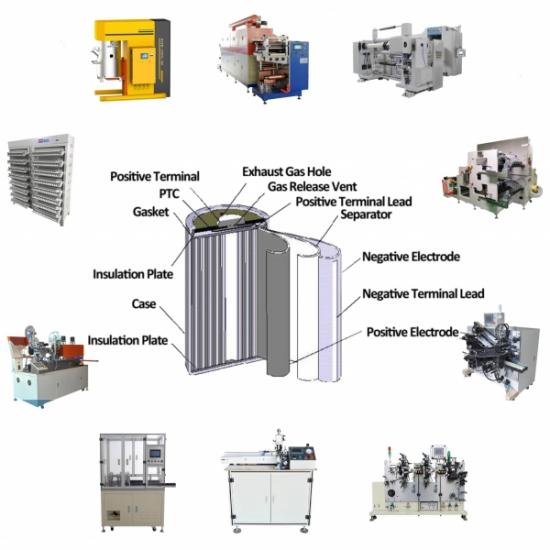Lithium Cell Assembly Plant: The Heart of Modern Energy Storage
A Lithium Cell Assembly Plant is a specialized facility where lithium-ion cellsâthe core components of batteriesâare manufactured, assembled, and tested. These plants are critical to the production of energy storage solutions that power everything from smartphones and laptops to electric vehicles (EVs) and renewable energy systems. In this blog post, we'll explore what a lithium cell assembly plant does, its key processes, challenges, and why it plays such a vital role in shaping the future of energy.
---
âWhat Is a Lithium Cell Assembly Plant?
A lithium cell assembly plant is a manufacturing facility designed to produce lithium-ion cells by combining raw materials, advanced machinery, and precise processes. These facilities can range from small-scale operations producing niche battery types to massive gigafactories capable of churning out millions of cells annually for global markets.
The primary output of these plants is lithium-ion cells, which are then integrated into battery packs for various applications, including:
- Consumer electronics
- Electric vehicles (EVs)
- Grid-scale energy storage
- Industrial equipment
---
âKey Processes in a Lithium Cell Assembly Plant
The manufacturing process in a lithium cell assembly plant involves several stages, each requiring precision and quality control to ensure reliable performance and safety.
1. Material Preparation
- Raw materials such as lithium, cobalt, nickel, manganese, graphite, and electrolytes are sourced and processed.
- Cathode and anode materials are mixed with binders and solvents to create slurries.
2. Electrode Coating
- The cathode (positive electrode) and anode (negative electrode) slurries are coated onto thin metal foils (aluminum for cathodes, copper for anodes).
- These coated foils are dried and compacted to achieve uniform thickness.
3. Cutting and Stacking
- The coated electrodes are cut into specific shapes and sizes.
- For pouch or cylindrical cells, the electrodes may be stacked or wound together with a separator layer to prevent short circuits.
4. Cell Assembly
- The electrodes and separator are enclosed in a casing (pouch, cylindrical, or prismatic).
- Electrolyte is injected into the cell to enable ion movement between the electrodes.
5. Formation and Activation
- The cells undergo a formation process where they are charged and discharged under controlled conditions to activate their electrochemical properties.
- This step ensures proper alignment of the materials within the cell.
6. Testing and Quality Control
- Cells are rigorously tested for capacity, internal resistance, leakage, and safety.
- Defective cells are discarded, while qualified cells move on to the next stage.
7. Packaging and Integration
- Qualified cells are packaged into modules and eventually assembled into complete battery packs for end-use applications.
---
âTypes of Lithium Cells Produced
Depending on the design and application, Cylindrical Cell Assembly Plants produce different types of cells:
1. Pouch Cells: Flexible, lightweight cells commonly used in consumer electronics and some EVs.
2. Cylindrical Cells: Round-shaped cells widely used in EVs and portable devices (e.g., Tesla's 2170 and 4680 cells).
3. Prismatic Cells: Flat, rectangular cells often found in EVs and stationary energy storage systems.
---
âChallenges in Lithium Cell Assembly Plants
While lithium cell assembly plants are essential for modern energy solutions, they face several challenges:
1. Supply Chain Constraints
- Securing a steady supply of raw materials like lithium, cobalt, and nickel is becoming increasingly difficult due to geopolitical factors, environmental concerns, and rising demand.
2. Cost Management
- Manufacturing costs must be minimized to make lithium-ion batteries affordable for mass-market adoption, especially in EVs and grid storage.
3. Safety and Reliability
- Ensuring the safety of lithium-ion cells is paramount, as defects can lead to thermal runaway, fires, or explosions.
4. Environmental Impact
- The extraction and processing of raw materials, as well as waste generation during production, pose significant environmental challenges.
5. Technological Advancements
- Keeping up with rapid advancements in battery technology, such as solid-state batteries or alternative chemistries, requires continuous investment in R&D and infrastructure upgrades.
---
âInnovations in Lithium Cell Assembly Plants
To address these challenges and improve efficiency, lithium cell assembly plants are adopting cutting-edge technologies:
1. Automation and Robotics
- Advanced robotics and automation reduce labor costs, increase precision, and enhance throughput.
2. AI and Machine Learning
- AI-driven analytics optimize production processes, predict failures, and improve yield rates.
3. Sustainable Practices
- Recycling programs and closed-loop systems recover valuable materials from spent batteries, reducing waste and conserving resources.
4. Next-Generation Chemistries
- Research into new battery chemistries, such as lithium-sulfur, sodium-ion, and solid-state batteries, promises higher energy densities, lower costs, and improved safety.
---
âThe Role of Lithium Cell Assembly Plants in Shaping the Future
As the world transitions toward cleaner energy sources and electrified transportation, lithium cell assembly plants will play a pivotal role in driving this transformation. They enable:
1. Decarbonization: By providing efficient energy storage solutions, these plants support the integration of renewable energy into the grid and the adoption of zero-emission vehicles.
2. Energy Independence: Localized battery production reduces reliance on imported fossil fuels and strengthens national energy security.
3. Job Creation: The growth of lithium cell assembly plants creates high-skilled jobs in engineering, manufacturing, and research.
---
âConclusion
Lithium cell assembly plants are at the forefront of the global shift toward sustainable energy. From powering our everyday devices to enabling the transition to electric mobility and renewable energy, these facilities are indispensable in building a cleaner, more connected future.
What excites you most about the future of lithium cell assembly plants? Share your thoughts in the comments below! Together, letâs explore how innovation in battery manufacturing can shape a brighter tomorrow.

 fr
fr en
en de
de ru
ru es
es pt
pt ko
ko tr
tr pl
pl th
th







 réseau ipv6 pris en charge
réseau ipv6 pris en charge